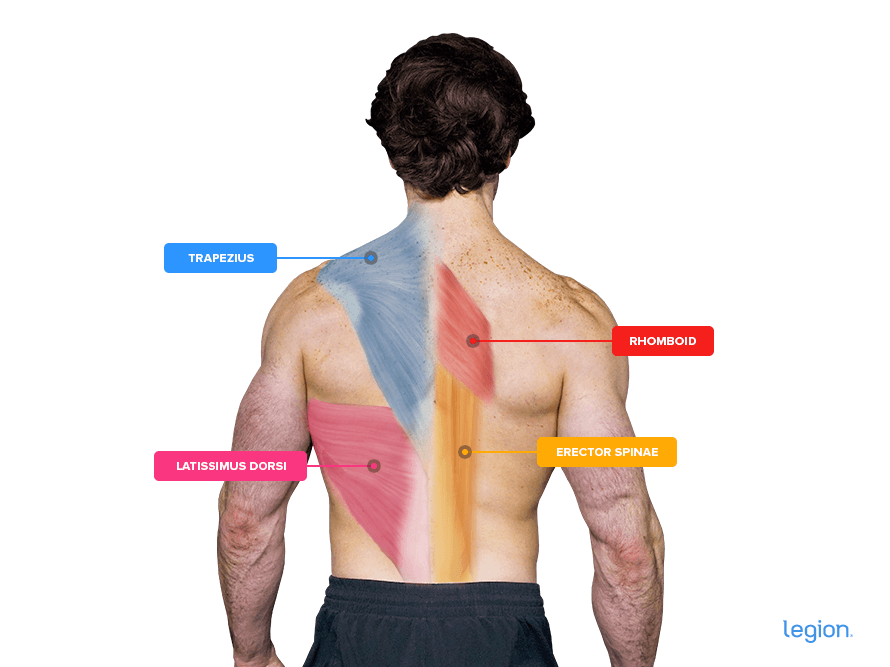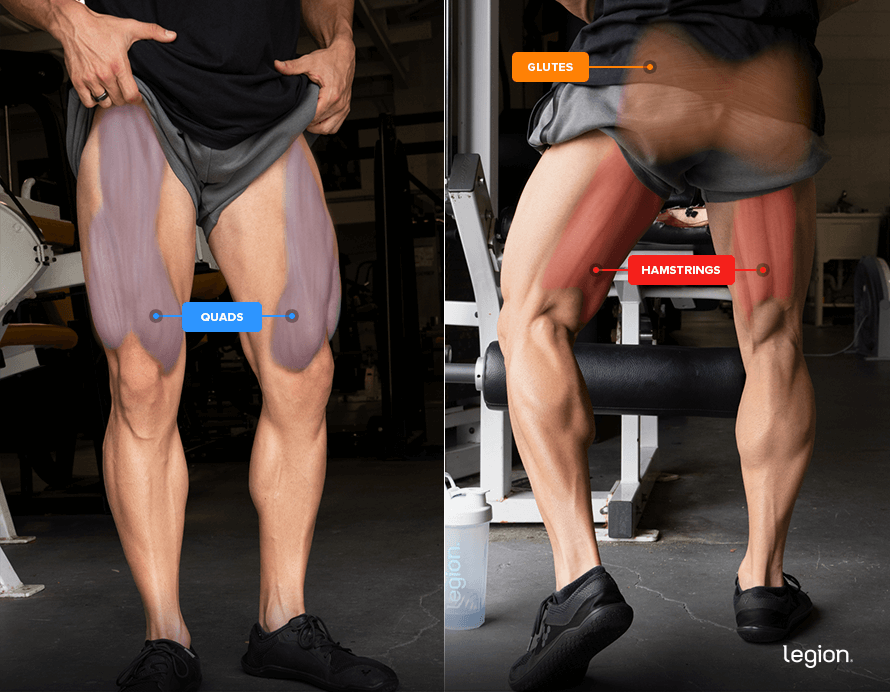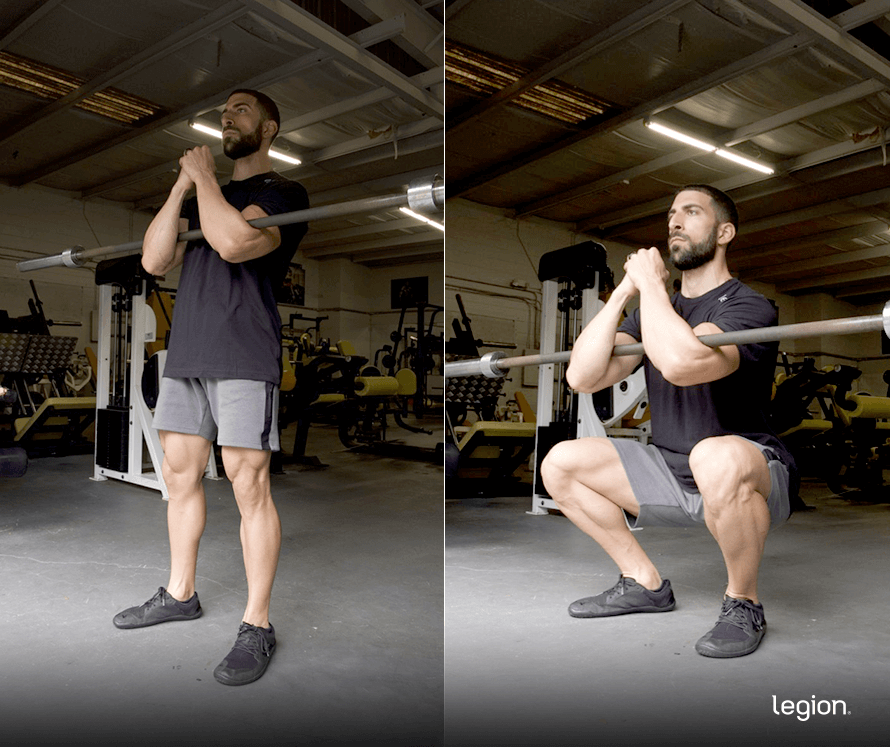The Zercher squat isn’t as ubiquitous as most other squat variations.
Nevertheless, it’s a fantastic exercise that trains several major muscle groups across your entire body, making it ideal for gaining full-body muscle and strength.
In this article, you’ll learn what the Zercher squat is, why it’s beneficial, which muscles it works, how to do it with proper form, the best Zercher squat variations and alternatives, and more.
What Is the Zercher Squat?
The Zercher squat is a barbell exercise that primarily trains your lower body and back.
To perform it, hold a barbell in the crooks of your elbows, and while keeping an upright torso, squat down until the bar touches your knees, then stand back up.
It gets its name from renowned strongman and powerlifter Ed Zercher. Zercher allegedly developed this squat variation because he didn’t have a squat rack, so he would deadlift the bar to his thighs, crouch down, hook his arms under the bar, and then begin squatting.
Zercher Squat: Benefits
Here are the main benefits of the Zercher squat.
1. It trains several major muscle groups.
Many people think of the Zercher squat as a lower-body exercise.
While it’s true that it trains all your lower body muscles, including your quads, hamstrings, and glutes, it also trains your back, shoulders, and biceps, making it an excellent exercise for building strength and size across your entire body.
Furthermore, it’s a boon for core strength and core stability because it necessitates that you keep an upright posture.
2. It’s easier on your lower back.
Because the Zercher squat is “front-loaded,” you must maintain an upright torso to balance. By staying upright, you take the stress off your lower back, which makes the Zercher squat a viable alternative to the regular squat for those with lower back issues.
3. It has a long range of motion.
Holding the weight on the front of your body allows you to squat through a full range of motion, even if you typically find deep squatting challenging.
Training through a full range of motion is advantageous because it’s generally better for muscle growth than training through a short range of motion.
Zercher Squat: Muscles Worked
Zercher squats work the following muscles:
It also trains your shoulders, biceps, and core to a lesser degree.
Here’s how the main muscles worked by Zercher squats look on your body:


Who Should Use the Zercher Squat?
The Zercher squat is a fantastic full-body exercise, yet its inherent discomfort deters many. And since less painful exercises yield similar results, people often opt for Zercher alternatives instead.
Overlooking the Zercher squat is understandable, though it’s not always a sensible gambit. That’s because it can help you gain strength and muscle that boosts your physical performance in multiple ways.
For instance, all strongman athletes and powerlifters can benefit from performing the Zercher squat in their training program because it builds strength that carries over to their sport.
For powerlifters, Zercher squats help develop posterior chain strength (strength in the muscles on the back of your body), which can enhance squat, bench press, and deadlift performance. Similarly, it allows strongmen to strengthen the muscles used in events similar to the Zercher squat, like the atlas stones, yoke carry, and Conan’s wheel.
The Zercher squat isn’t only for those looking to maximize strength for sport, however. It‘s also a fitting exercise for regular gym-goers who want to make everyday tasks easier.
Many day-to-day activities require you to carry weight on the front of your body, such as carrying a child or laundry basket. Moreover, front-loaded carries are common in the workplace, especially among first responders, military personnel, and construction workers.
By incorporating the Zercher squat into your training program, you can better prepare and strengthen the muscles essential for these tasks.
How to Do Zercher Squats
The best way to learn how to perform the Zercher squat is to split the exercise into three parts: set up, descend, and squat.

1. Set up
Place a barbell in a squat rack 2-to-3 inches above navel height. Lightly press your abs against the bar, then slightly bend your knees and position the bar in the crooks of your elbows.
If necessary, wrap a bar pad, rolled-up yoga mat, or towel around the bar, or wear knee or elbow sleeves over your elbows to make the exercise more comfortable.
You can position your hands in multiple ways, but most people find one of the following three options best:
- Make a fist with your non-dominant hand in front of the center of your chest, then grasp the back of your fist with your dominant hand and bring both hands close to your chest.
- Make fists with both hands and bring them together until your pinkies touch in front of the center of your chest, then bring both hands close to your chest.
- Make fists with both hands and keep them shoulder-width apart, then bring your hands close to your shoulders.
With your hands set, flatten your back, pull your shoulder blades together and down, and engage your lats. Straighten your legs to lift the bar out of the rack, then stand up straight.
While keeping the bar in contact with your torso, take one or two steps backward with both feet and position your feet just outside of shoulder width with your toes pointed slightly outward.
2. Descend
Take a deep breath into your belly and sit straight down. Remember to keep your back straight, the bar in contact with your torso, and push your knees out in the same direction as your toes.
As you descend, allow your elbows to pass inside your knees. Keep descending until the bar makes light contact with your knees.
The biggest mistake people make during the descent is letting their hands move away from their body. This causes the bar to roll away from your body, causing your upper back to round and your body to tip forward, making it more challenging to squat.
A good cue to prevent this is to imagine touching the wall behind you with your elbows and palms.
The second biggest mistake people make is letting their knees cave in toward one another. To avoid this, think about pushing the floor apart as you descend.
3. Squat
Keeping your hands close to your shoulders or chest, the bar in contact with your torso, and your back straight, stand up and return to the starting position. This mirrors what you did during the descent.
The biggest mistake people make during this phase is relaxing one part of their body, like their upper back, core, or shoulders.
Thus, remember to keep everything tight during the ascent. Don’t relax your upper back, shoulders, or hands.
It’s also common for many people to let their upper back tilt forward as they begin to ascend, forcing them onto their tippy-toes and wasting energy. A good cue for countering this is to think about “pushing off your heels.” This helps keep the bar centered over your midfoot throughout the squat.
The Best Zercher Squat Variations
1. Zercher Carry
Zercher carries are a good alternative for those who want to emphasize postural strength. To program them into your workout routine, add them to the end of a leg or lower-body workout and try to cover a set distance or complete a set number of steps.
2. Zercher Split Squat
The benefit of the Zercher split squat is that it trains your body unilaterally (one side at a time), which is useful for finding and fixing muscle imbalances.
3. Zercher Box Squat
A common mistake people make while Zercher squatting is tipping forward as they transition from descending to ascending. The Zercher box squat helps correct this because it takes the momentum out of the movement, making you more aware of how you move your body during each phase of the exercise.
The Best Zercher Squat Alternatives
1. Front Squat
The front squat trains the same muscles as the Zercher squat to a comparable degree. However, some people find the front squat more comfortable, making it a viable alternative.
2. Goblet Squat
The goblet squat is an excellent exercise for new weightlifters because it’s easy to learn, comfortable, and trains your entire lower body. That said, loading the goblet squat heavily is challenging, which limits its muscle- and strength-building potential.
3. Sandbag Bearhug Squat
The sandbag bearhug squat trains your body similarly to the Zercher squat while being more comfortable. The only downside is sandbags come in set weights, so you can’t progressively overload this exercise as easily as the Zercher squat, negating some of its benefits.
Scientific References +
- Deniz Erdağ, and Hasan Ulaş Yavuz. “Evaluation of Muscle Activities during Different Squat Variations Using Electromyography Signals.” ResearchGate, unknown, 2020, www.researchgate.net/publication/337400852_Evaluation_of_Muscle_Activities_During_Different_Squat_Variations_Using_Electromyography_Signals.
- Schoenfeld, Brad J, and Jozo Grgic. “Effects of Range of Motion on Muscle Development during Resistance Training Interventions: A Systematic Review.” SAGE Open Medicine, vol. 8, no. 8, Jan. 2020, p. 205031212090155, https://doi.org/10.1177/2050312120901559.










